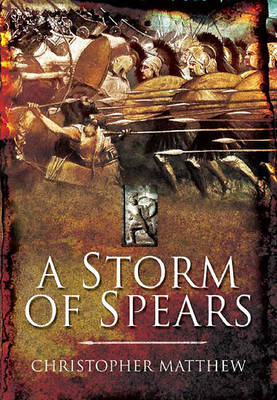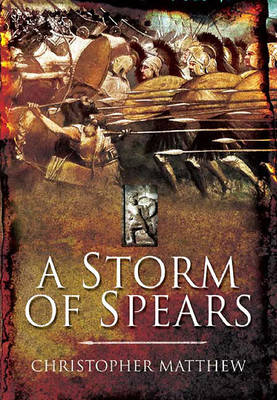
- Retrait gratuit dans votre magasin Club
- 7.000.000 titres dans notre catalogue
- Payer en toute sécurité
- Toujours un magasin près de chez vous
- Retrait gratuit dans votre magasin Club
- 7.000.0000 titres dans notre catalogue
- Payer en toute sécurité
- Toujours un magasin près de chez vous
31,95 €
+ 63 points
Description
The backbone of classical Greek armies was the phalanx of heavily armored spearmen, or hoplites. These were the soldiers that defied the might of Persia at Marathon, Thermopylae and Plataea and, more often, fought each other in the countless battles of the Greek city-states. For around two centuries they were the dominant soldiers of the Classical world, in great demand as mercenaries throughout the Mediterranean and Middle East. Yet, despite the battle descriptions of Herodotus, Thucydides, Xenophon etc, and copious evidence of Greek art and archaeology, there are still many aspects of hoplite warfare that are little understood or the subject of fierce academic debate.
Christopher Matthew's groundbreaking reassessment combines rigorous analysis of the literary and archaeological evidence with the new disciplines of reconstructive archaeology, re-enactment and ballistic science. He focuses meticulously on the details of the equipment, tactics and capabilities of the individual hoplites. In so doing he challenges some long-established assumptions. For example, despite a couple of centuries of study of the hoplites portrayed in Greek vase paintings, Matthew manages to glean from them some startlingly fresh insights into how hoplites wielded their spears.
These findings are supported by practical testing with his own replica hoplite panoply and the experiences of a group of dedicated re-enactors. He also tackles such questions as the protective properties of hoplite shields and armor and the much-vexed debate on the exact nature of the 'othismos', the climax of phalanx-on-phalanx clashes. This is an innovative and refreshing reassessment of one of the most important kinds of troops in ancient warfare, sure to make a genuine contribution to the state of knowledge.
Christopher Matthew has just completed his doctoral thesis on hoplite warfare at MacQuarie University in Sydney, where one of his assessors has said he 'singlehandedly advanced the whole field'. He has also been invited to lecture on the subject at other Australian universities. This book, closely based on his doctoral thesis, will be his first, although he has already had several articles published in academic journals. He is currently working on a new translation of Aelian's work on tactics and co-editing (with Dr Matthew Trundle) Beyond the Gates of Fire: New Perspectives on the Battle of Thermopylae, both of which will be published by Pen & Sword.
Christopher Matthew's groundbreaking reassessment combines rigorous analysis of the literary and archaeological evidence with the new disciplines of reconstructive archaeology, re-enactment and ballistic science. He focuses meticulously on the details of the equipment, tactics and capabilities of the individual hoplites. In so doing he challenges some long-established assumptions. For example, despite a couple of centuries of study of the hoplites portrayed in Greek vase paintings, Matthew manages to glean from them some startlingly fresh insights into how hoplites wielded their spears.
These findings are supported by practical testing with his own replica hoplite panoply and the experiences of a group of dedicated re-enactors. He also tackles such questions as the protective properties of hoplite shields and armor and the much-vexed debate on the exact nature of the 'othismos', the climax of phalanx-on-phalanx clashes. This is an innovative and refreshing reassessment of one of the most important kinds of troops in ancient warfare, sure to make a genuine contribution to the state of knowledge.
Christopher Matthew has just completed his doctoral thesis on hoplite warfare at MacQuarie University in Sydney, where one of his assessors has said he 'singlehandedly advanced the whole field'. He has also been invited to lecture on the subject at other Australian universities. This book, closely based on his doctoral thesis, will be his first, although he has already had several articles published in academic journals. He is currently working on a new translation of Aelian's work on tactics and co-editing (with Dr Matthew Trundle) Beyond the Gates of Fire: New Perspectives on the Battle of Thermopylae, both of which will be published by Pen & Sword.
Spécifications
Parties prenantes
- Auteur(s) :
- Editeur:
Contenu
- Nombre de pages :
- 360
- Langue:
- Anglais
Caractéristiques
- EAN:
- 9781636241333
- Date de parution :
- 12-01-22
- Format:
- Livre broché
- Format numérique:
- Trade paperback (VS)
- Dimensions :
- 156 mm x 232 mm
- Poids :
- 576 g

Les avis
Nous publions uniquement les avis qui respectent les conditions requises. Consultez nos conditions pour les avis.






